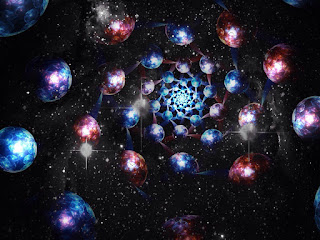 |
| http://1.bp.blogspot.com/_basraNod1Ms/TFg2mhiIekI/AAAAAAA ABmA/V6_w9R6mz18/s1600/Solar+Flare+Storm+August+3+2010 |
On September 1, 1859, the amateur astronomer Richard
Carrington looked through the telescope in his private observatory and witnessed
blotches of immensely bright white light erupting from the surface of the sun. Though
they quickly vanished from view, these eruptions in space would soon prove more
dangerous than could be foreseen.
That night, the sky burned with light enough to trick both
animal and man into believing the sun had begun to rise. What many assumed to
be the end of the world was actually the result of a massive solar flare with
the energy of ten billion atomic bombs.
This flare caused the largest disturbance in Earth’s
magnetic field in recorded history. This solar storm was later named the “Carrington
Event.”
Telegraphs were a critical means of transmitting information
in that particular fragment of time. Because of those solar flares, telegraph
operations were completely halted world-wide. The energy expended into Earth’s
atmosphere was so great that the equipment’s circuits were in danger of melting
and would often pour out torrents of fire.
The transmissions of the surviving telegraphs were unable to
be sent or received until after the magnetic effects of the second solar flare
began to lessen.
Electronics then were few and far between; today, there are
satellites, power grids, GPS, and much, much more. With each passing year,
humanity becomes more dependent on magnetically vulnerable technology.
Take a moment to envision an incident similar to the
Carrington Event in modern times.
Sewage systems would cease to work, as would heating and air
conditioning, gas pumps, lights, the Internet, ATMs, and devices that rely on
wall outlets. Perishable food and medication would decay. These would not be
temporary damages; repairs would be underway for years to come.
This is not a fantastical “what if” scenario. In 2012, a
solar storm directly comparable to the Carrington Event was narrowly avoided by
our planet.
Though NASA has warning systems in place, satellites
specifically designed to measure the strength and distance of solar storms,
they will only afford humanity an hour warning at most to get comfortable with
the idea that their world may cease to exist as they know it.
There is no defense.
The understanding that most of our infrastructure and
technology could be rendered useless with so little notice is a humbling
thought, is it not? That thought is made worse by the realization that many
people would have little to no idea how to survive without them, and that governments
worldwide would be unable to function on the scale necessary to look after the entirety
of their nation’s population.
Mass theft and death would only be the tip of the proverbial
iceberg.
This is your warning. What will you do with it?


